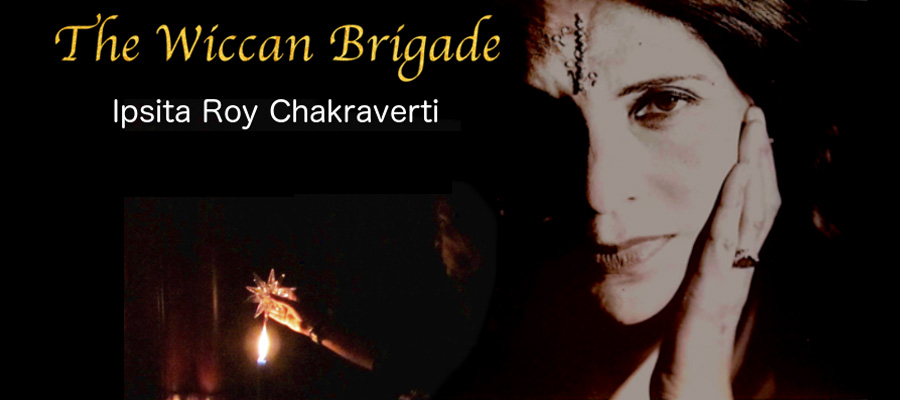


Also known as: Lamma, Lamassu
Pray to her for: Protection, safety, reaching your wishes to the higher powers, connecting with the ancestors.
Invoke her with: Smoke, incense, smudging. If you have a cauldron, light its fire and seek her blessings.

(Inspired by a Stele of the Goddess Lama at the Metropolitan Museum, NY)
Old seals and remains of statuettes show Lama wearing a multi horned headdress which marks her divine status. Her hair is in a low knot with two strands falling across her shoulders. Her dress has a series of rings at the neck with a tassle or fastening at the back. There are also pleated sections falling one on top of another in layers. Her arms are raised in prayer.
Lama was a popular figure on amulets for protection and also as votive offerings. She was also seen as an intermediary between man and god. She was the goddess who would intercede with another god or goddess on behalf of the supplicant.
Early Kasseite seals on many instances show Lama by herself, indicating that she herself was taken as
a major divinity. However, by the time of Ur III, she was shown with a major divinity, making her status as an intermediary minor divinity.
References
1. Mercer, Samuel A.B. "The Malediction in Cuneiform Inscriptions." Journal of the American Oriental Society 34 (1915)
2. Dhwty. “Nammu: A Forgotten Tale of the Sumerian Mother of Gods.”. Ancient Origins: Reconstructing the story of Humanity’s Past,
3. Hallo, William W. The Book of the People. Providence RI 02912: Brown Judaic Studies, Brown University. 2020.
4. Black, Jeremy. Gods, Demons and Symbols of Ancient Mesopotamia: An Illustrated Dictionary. 2014
6. Price, Ira M. “The Oath in Court Procedures in Early Babylonia and the Old Testament”. Journal of the American Oriental Society 49(1929)
7. Bock, Barbara. The Healing Goddess Gula: Towards an Understanding of Healing Babylonian Medicine. 2014
8. Alvarez-Mon, Javier. The Art of Elam: Routledge
9. Wiseman, D.J. “The Goddess Lama at Ur”. Iraq 22(1-2), ‘Ur in Retrospect: In memory of Sir C. Leonard Woolley’ pp 166-171. 1960
10. De Shong Meador, Betty. “Enheduanna: The First Known Author”. American Translators Association Publication. June 27,2017.
11. Ornan, Talley. “The triumph of the symbol: Pictorial representation of deities in Mesopotamia and the biblical image ban”. University of Zurich, 2005.
12. Koch, Heidemarie. “Theology and Worship in Achaemenid Iran”. Religion and Science, 1995
13. Ford, Michael. Maskim Hul: Babylonian Magick. 2010.
14. Jordan, Michael. Dictionary of Gods and Goddesses. New York: 1993,2004
15. Folz, Richard. Iran in World History. United States of America, 2016
16. Mark, Joshua. “The Myth of Etana”. Ancient History Encyclopedia.
17. Abusch, Tzvi and Karel Van der Toorn. Mesopotamian Magic: Textual, Historical and Interpretative Perspectives.
18. Hurwitz, Siegmund, Lilith, the first Eve: Historical and Psychological Aspects of the Dark Feminine.
19. Koch-Westenholz, Ulla. Mesopotamian Astrology: An Introduction to Babylonian and Assyrian Celestial Division. University of Copenhagen
20. Sjoberg, Ake W. “Hymn to Inanna and Her Self Praise”, Journal of Cuneiform Studies, Volume 40 Number 2.
21. Guterbock, Hans Gustav. “An Addition to the Prayer of Muršili to the Sungoddess and Its Implications”. Anatolian Studies, Volume 30, 1980.
22. Sassmannshausen, Leonard ed. He has Opened Nisaba’s House of Learning:
23. Norrie, Philip. History of Disease in Ancient Times: More Lethal Than War, 2018.
24. Mullo-Weir, C.J. Rev. “Four Hymns to Gula”, Journal of the Royal Asiatic Society, Part 1 – January, 1929
25. Blasweiler, Joost. “The Kalehisar Mountain and the deities of Arinna, the city of the Sun Goddess” Academia.Edu,
26. Scurlock, JoAnn, and Burton R. Andersen. Diagnoses in Assyrian and Babylonian Medicine: Ancient Sources, Translations, and Modern Medical Analyses. University of Illinois
27. Langdon, Stephen Herbert. Sumerian Liturgies and Psalms. United States of America: Library of Alexandria, 1919
28. Gabolde, Marc Dr. “The End of the Amarna Period”, BBC History, February 17, 2011,
29. Houwink, H.J. Ph. “Hittite Royal Prayers”, Brill Online Publication, Volume 16, Issue 1, 1st January, 1969
30. “Ancient Mesopotamian Gods and Goddesses”, Oracc and UK Higher Education Academy,
31. Dassow, Eva Von, Dr. “Contagion and Recovery in the Ancient Hittite Empire”,
32. Mark, Joshua J. “Ancient History Encyclopedia”, Ancient History Encyclopedia.